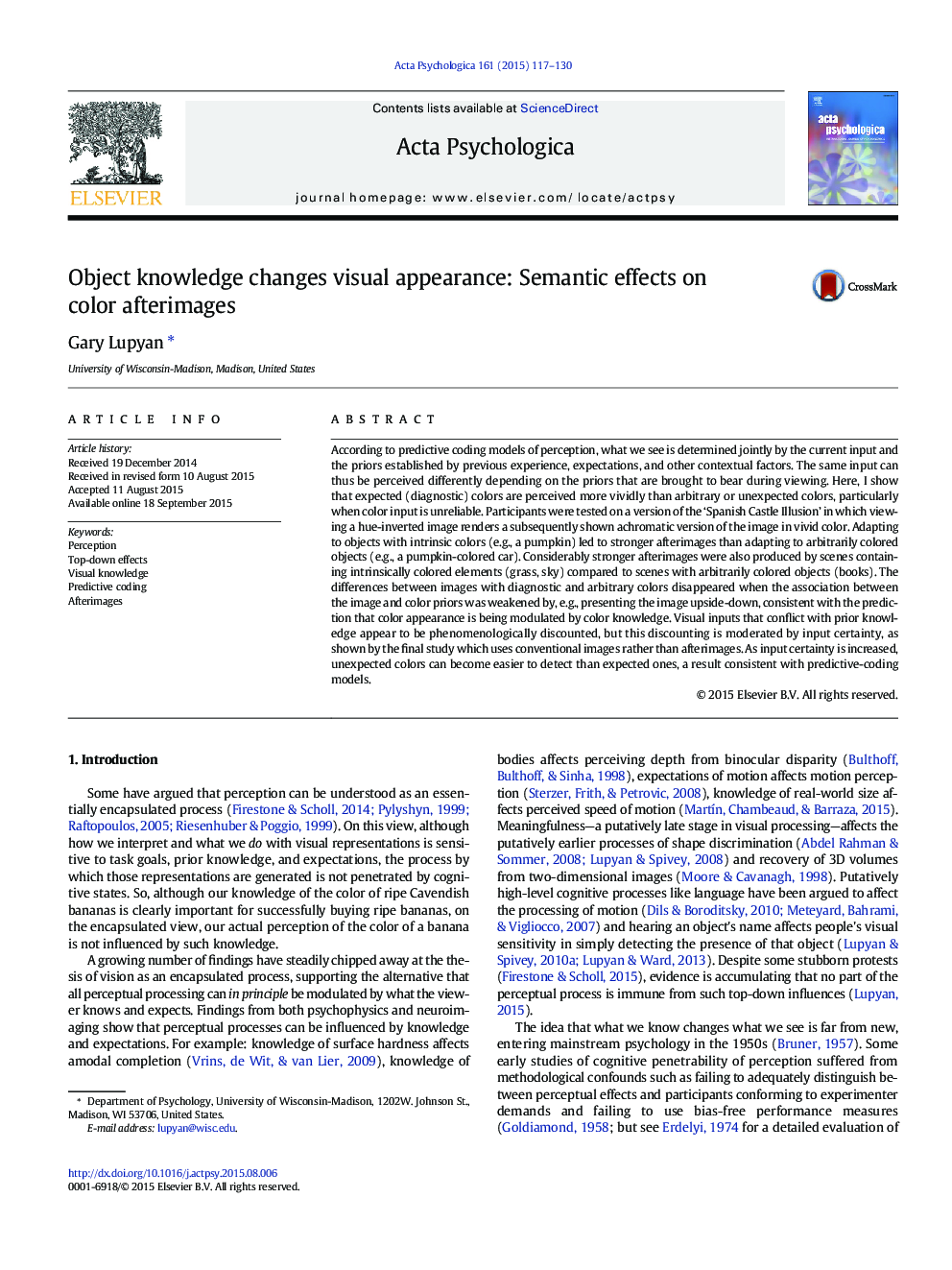| کد مقاله | کد نشریه | سال انتشار | مقاله انگلیسی | نسخه تمام متن |
|---|---|---|---|---|
| 7277252 | 1473597 | 2015 | 14 صفحه PDF | دانلود رایگان |
عنوان انگلیسی مقاله ISI
Object knowledge changes visual appearance: Semantic effects on color afterimages
ترجمه فارسی عنوان
دانش شیء تغییر ظاهر بصری: اثرات معنایی روی رنگ پس زمینه
دانلود مقاله + سفارش ترجمه
دانلود مقاله ISI انگلیسی
رایگان برای ایرانیان
کلمات کلیدی
ادراک، اثرات بالا به پایین، دانش بصری، برنامه نویسی پیش بینی شده بعد از تصویر،
موضوعات مرتبط
علوم زیستی و بیوفناوری
علم عصب شناسی
علوم اعصاب شناختی
چکیده انگلیسی
According to predictive coding models of perception, what we see is determined jointly by the current input and the priors established by previous experience, expectations, and other contextual factors. The same input can thus be perceived differently depending on the priors that are brought to bear during viewing. Here, I show that expected (diagnostic) colors are perceived more vividly than arbitrary or unexpected colors, particularly when color input is unreliable. Participants were tested on a version of the 'Spanish Castle Illusion' in which viewing a hue-inverted image renders a subsequently shown achromatic version of the image in vivid color. Adapting to objects with intrinsic colors (e.g., a pumpkin) led to stronger afterimages than adapting to arbitrarily colored objects (e.g., a pumpkin-colored car). Considerably stronger afterimages were also produced by scenes containing intrinsically colored elements (grass, sky) compared to scenes with arbitrarily colored objects (books). The differences between images with diagnostic and arbitrary colors disappeared when the association between the image and color priors was weakened by, e.g., presenting the image upside-down, consistent with the prediction that color appearance is being modulated by color knowledge. Visual inputs that conflict with prior knowledge appear to be phenomenologically discounted, but this discounting is moderated by input certainty, as shown by the final study which uses conventional images rather than afterimages. As input certainty is increased, unexpected colors can become easier to detect than expected ones, a result consistent with predictive-coding models.
ناشر
Database: Elsevier - ScienceDirect (ساینس دایرکت)
Journal: Acta Psychologica - Volume 161, October 2015, Pages 117-130
Journal: Acta Psychologica - Volume 161, October 2015, Pages 117-130
نویسندگان
Gary Lupyan,
